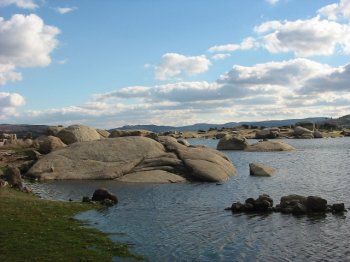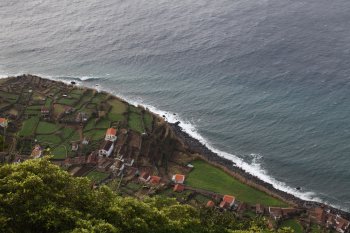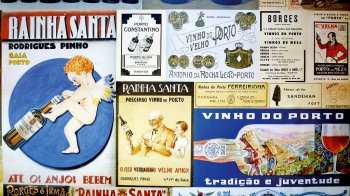Explore the best places
Results for Vila Praia de Âncora in Portugal
Mosteiro de Santo Estevão de Vilela
- heritage
EM602, 441
4580-660, Vilela
The Santo Estevão de Vilela Monastery is composed of a church and of the monastery's house. It was built even before Portugal's foundation. By the church there is the old monatery's building, composed of three aisles with a square shape. There is a coat of arms on the main entrance that stands on a lintel in a segmetal arch that ends in a partial triangular shape. In the third aisle, a special note to the manuelin chimney. Inside the temple, the high altar is golden carved. The monastery is being restored and the space will be converted into a museum …

Mosteiro de São Pedro de Ferreira
- heritage
Rua do Cruzeiro, 124
4590-827, Ferreira
The monastery of Ferreira is a typical example of an ecclesiastical establishment of agrarian roots. It is a remarkable rural Romanesque construction dating from the last quarter of the 12th century. The facade is torn by a portal that is unparalleled in the Cathedral of Zamora. Its architectural ensemble is part the Church of s. Pedro de Ferreira, being your frame a single copy in the country. The interior is just one ship, with more than 15 meters in height. A monument of a unique beauty and a magnificent surrounding landscape.

Forte Nossa Senhora das Neves / Castelo de Matosinhos
- heritage
Largo do Castelo
4450, Leça da Palmeira
This 17th century building is shaped like a four-pointed star, each protected by guardhouses. The vestiges of this defensive fort can be seen on Avenida Doutor Antunes Guimarães, Rampa do Castelo and Rua de Santa Catarina. It began to be built in 1638, but in 1655 it was still not completed. In 1832, during the civil war, it underwent some modifications and, in the 20th century, it was handed over to the Captaincy of the Port of Leixões, which carried out works to house its staff there.

Parque Natural de Montesinho
- country
Portelo
5300-544, França
With around 75,000 hectares, it is one of the largest protected natural areas in Portugal and a must-see for anyone arriving in this region where nature has been very generous. The Serra de Montesinho is characterized by its rounded hills and the valleys the Sabor, Maçãs and Baceiro Rivers. The fauna is varied and rich, with emphasis on the presence of wolves, deer, roe deer, nesting birds, amphibians and reptiles. There are signposted walking paths that are a great way to get in touch with the vast biodiversity.

Conjunto urbano na Rua de Cedofeita e Praça Carlos Alberto
- heritage
Rua Cedofeita, 1
4150, Porto
The Cedofeita Street was built into structure as a main thoroughfare of the walled city and, in 1784, João de Almada e Melo ordered to cut through the Quinta da Torrinha. Most of the constructions are from the XVIII, XIX and XX centuries, although you can still find some buildings from the XVII century. Balconies, terraces, irons, glazed tiles, ashlars-work, ceramics and mansards are some the architectonical elements that contribute to particularize this thoroughfare, which has equally a big historic and cultural importance.

Fajã de São João
- heritage
Fajã de São João
9875-027, Topo
Accessible by car almost all the way up to its completion, the Fajã de São João, the largest fajã da costa South of the municipality of Calheta, is local in passing mandatory for all those who seek tranquility, in landscapes of rare beauty. Is also known for being summer location of some wealthy families on the island. The steep location is sometimes synonymous with tragedy, and the population has suffered some setbacks da fajã, since siege of pirates to natural disasters.

O Bairro Alto nos Caminhos do Barroco
- heritage
Bairro Alto
1200, Lisboa
Organized by the Centro Nacional de Cultura, this walk takes you to know the Portuguese Baroque, characterized both for the sobriety of the architectonical space as for the exuberance of its decoration. The golden chromium plated woodcarving, the glazed tiles, the decorative paintings, the stucco, the furniture and, generally, the plastic and decorative arts, combine to create the ostentation of the Baroque. The references of this tour are notable exemplars of the Portuguese art (civil and religious architecture), through which you can be integrated in the spirit of a time that marked the XVII and XVIII centuries.
Holmes Place
- leisure
Rua do Centro Empresarial, Edifício 9 - Beloura Office Park
2710-444, Sintra
Although it is set in a luxury condo, this healthclub is accessible to anyone who wants to take care of body and mind. Enjoys excellent natural lighting and a relaxing and familiar environment, and has 3,500 m2 area spread over 3 floors, gym with cardiovascular and weight training equipment with views of the serra de Sintra, studios with more than 100 weekly group lessons and Zensations SPA, among other facilities. The smaller ones can also count on a series of activities prepared especially for them.
Museu do Vinho do Porto
- heritage
Rua da Reboleira, 33-37
4050-492, Porto
Located at the Cais Novo Warehouses, where the wines of the Companhia Geral de Agricultura das Vinhas do Alto Douro used to be stored, this is a building that was constructed by the family Pinto da Cunha Saavedra in the 1700s. This space shows the privileged location of Oporto, as a commercial outpost, and relates mostly to the Port wine, the transportations, mainly along the Douro river, and the ways of life that were generated from those activities, namely with th coming of several foreign colonies. It has several programs for specific audiences.

Casa-Museu Ferreira de Castro
- heritage
Rua Escritor José Maria Ferreira de Castro
3720-189, Ossela
This is the former home of writer José Maria Ferreira de Castro (1898-1974), author of books such as "A Selva", which describes the drama of emigrants and the exoticism of the Amazon jungle, and "Volta ao Mundo", a description of his almost two-year journey shortly before the Second World War. This building, dating from the mid-19th century, is now a museum that brings together the writer's books, manuscripts and personal objects, including the shoes and suitcase that accompanied him on this trip around the world.
